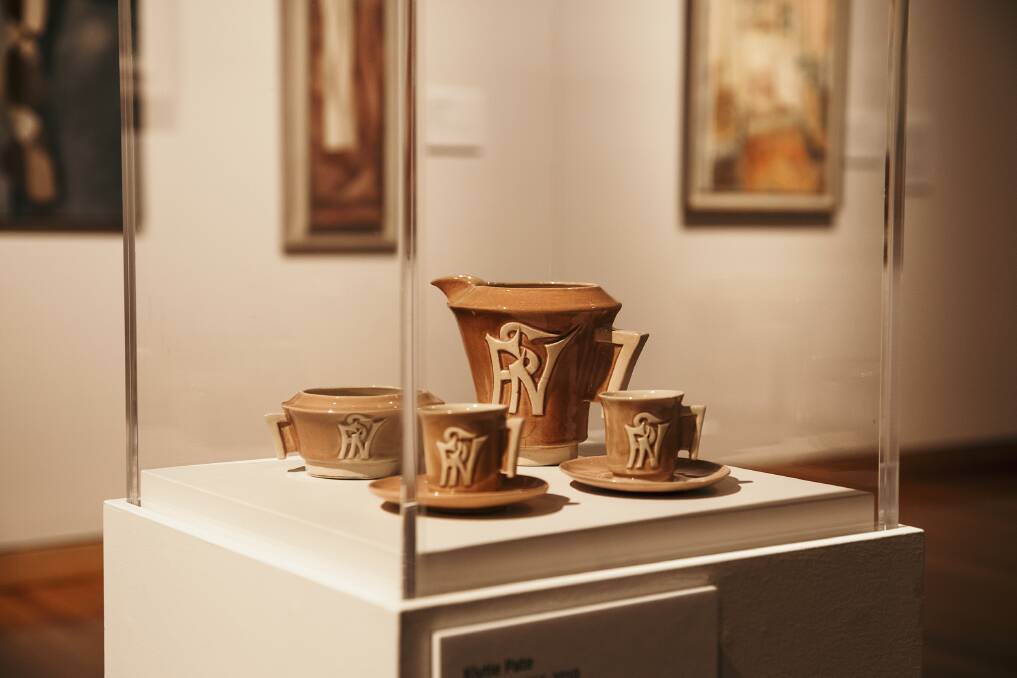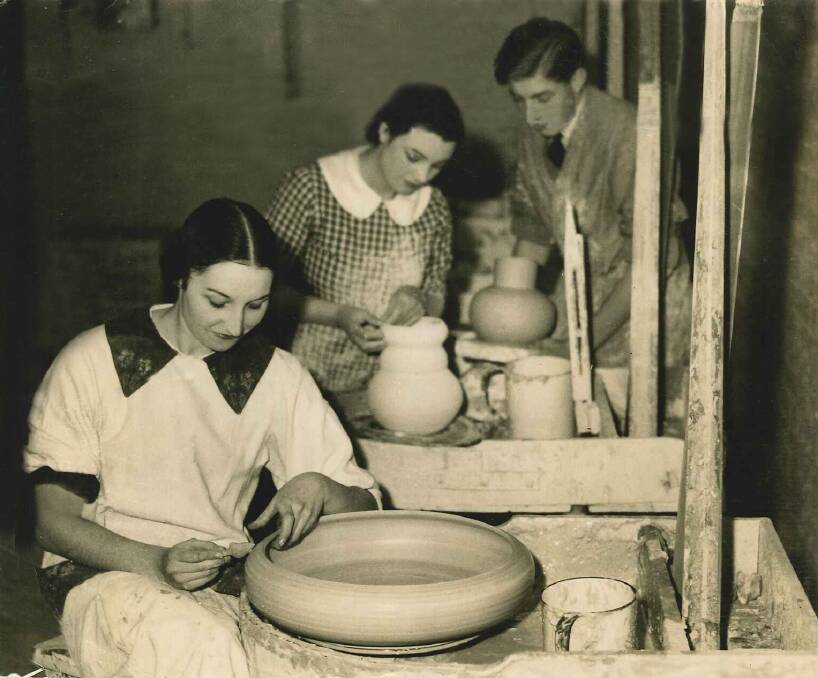
In 1960, influential architect Robyn Boyd published a best-selling text called The Australian Ugliness.
Subscribe now for unlimited access.
$0/
(min cost $0)
or signup to continue reading
The book was a scathing critique of the Australian aesthetic, which Boyd said was too influenced by English and American styles and lacked originality.
The works featured in the current exhibition at Bendigo Art Gallery, Defying the Australian Ugliness, curated by Jessica Bridgfoot, suggest otherwise.
Klytie Pate's Coffee set of 1941 (a generous gift to the gallery by Mrs Barbara Mann in 2001) is one of several works by the pioneering potter held in the Bendigo Art Gallery collection.
The intertwining initials on the set suggest it was originally made as a personalised gift, perhaps for a wedding.
Klytie Pate (1912-2010) was one of Australia's most celebrated ceramic artists, whose imaginative and prolific output saw ceramics elevated to the status of art in this country.
Pate was a member of an important group of ceramic artists who studied at Melbourne Technical College (now RMIT) in the 1930s.
The scarcity of resources during the Great Depression encouraged this group to be highly innovative with glaze recipes and modes of decoration, which included dynamic designs skilfully hand-carved into their pots.

In 1947, Klytie Pate and her Melbourne Technical School colleague, Alan Lowe, were the first contemporary ceramicists to have their work acquired by the National Gallery of Victoria, a significant acknowledgement of their achievements and of the art form itself.
From 1941, the year Coffee set was made, Klytie Pate presented one to two solo exhibitions a year in most states of Australia, every year until her last exhibition in 1998.
Throughout her career, Pate remained true to the earthenware tradition, despite the proliferation of stoneware in the 1950s, which was ushered in by the ready availability of higher temperature kilns and a shift towards the utilitarian simplicity espoused by influential British studio potter Bernard Leach.
Again and again, Pate returned to the distinctive and beautiful flora and fauna of Australia for inspiration for her designs.
The other ceramic works included in this exhibition, by Stephen Benwell and others, show a continuing and innovative engagement with ceramics in this country.

